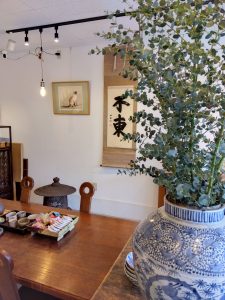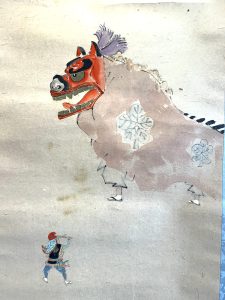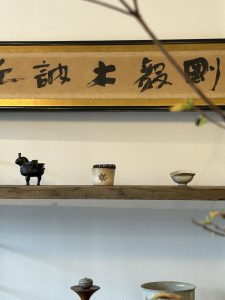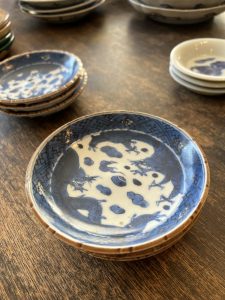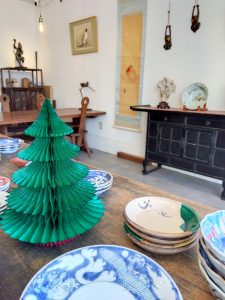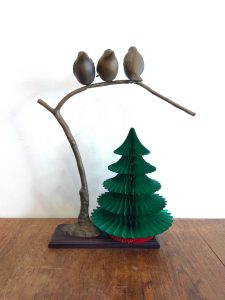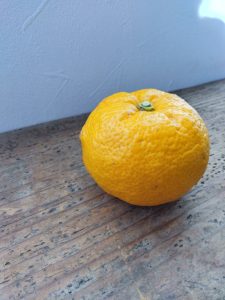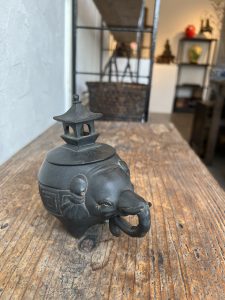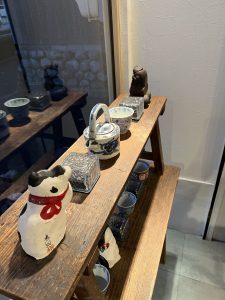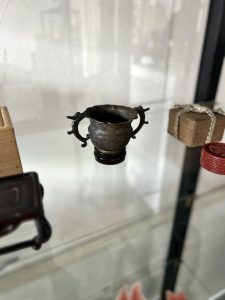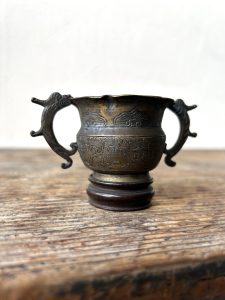成人の日おめでとうございます。(愛知県名古屋市千種区姫池通 骨董買取 古美術風光舎)
2024.01.08
みなさまこんにちは、スタッフYでございます。
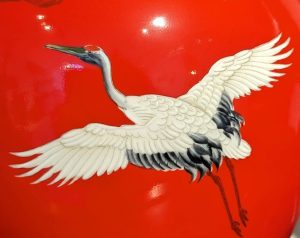
先日はお寒い中、古美術風光舎のふるまい酒へお越しくださいまして、誠にありがとうございました。
今年はこのようなイベントを通して、お客様とたくさんの交流ができたらいいなと思っておりますので、次なる企画、楽しみにお待ちくださいませ。
さてさて、そんな新春の余韻を残しつつ今日は成人の日。
成人の日を迎えられた皆さまおめでとうございます。先日も一足早く、振袖の袖を揺らしながら颯爽と行くお嬢さんたちに遭遇いたしました。かわいらしいですね。
成人年齢が18歳に引き下げられたことによって諸々ややこしくはなりましたが、18歳でも20歳でもここまで無事に育ったことだけでも無条件に素晴らしいこと。この三連休ご家族や友人との久しぶりの再会やお祝いなど楽しんでもらいたいものです。
それはそうと、かつて1月15日が「成人の日」として祝日だったことは記憶にあるかたもいらっしゃるのではないでしょうか。成人の日は、2000年から祝日法の改正にともない第二月曜日(ハッピーマンデー制度)となったのですが、自分もそんなことそろそろ忘れてしまいそうになります。
そもそも、1949年から「おとなになったことを自覚し、みずから生きぬこうとする青年を祝いはげます」という趣旨のもと始まったことが成人の日の始まりなのですが、そういえばなぜ1月15日だったのでしょうか。祝日の日のいわれは個人的にちょっと気になるので、今回も調べてみました。
結論から申し上げますと、江戸時代以前、男子の元服の儀が一月十五日におこなわれていたことに由来しているようでありました。
旧暦、太陰太陽暦時代の暦では毎月十五日はほぼ満月。特に一月十五日は、その年の初めての満月を祝う「小正月」であります。この特別な満月の日に一家の行く末を託す男子の「元服」をおこなっていたことが由来のようであります。元服の儀をおこなった小正月も旧暦時代では現在の2月中旬。立春を過ぎ、春の足音がハッキリと聞こえてくるころにあたり、若者が大人としての一歩を歩みだすのにふさわしい時節だったと言えるでありましょう。
ですが、明治六年(1867)に、それまでの太陰太陽暦から現在の太陽暦が採用され、その際節句や暦の雑節は太陽暦の同じ月日に移動し、それまで行事がおこなわれていた時期と約一ヶ月ほどのズレが生まれてきました。1月15日という日付だけはそのまま残ったようですね。
そんなわけで本来の由来は消え去っております。成人の日が連休にあたることも(地域によって成人式を行う時期は違いますが)現在の生活様式においては、帰省もできるし、準備もできるし、お友達と同窓会もできるし、よいような気も致しますが、この意味だけは記憶に少しは残しておこうかなと思っております。
またまた由来の話にもどりますが、通過儀礼の多くは「服装規定」が存在します。「元服」では冠をつけることが許され、女性は「結髪」など。今でも皇室では、皇太子が、青年皇族の一員であることを内外に宣言し冠を授けられる「成年の儀・加冠の儀」と呼ばれる儀式がありますよね。また、一般の我々が成人式に着る振袖も第一礼(正)装ですから「服装規定」はここにも残っているわけでしょうか。
また、成人するという意味は少々重いようでして、古来武家には、元服を迎える若者に冠を授ける役割を担う大人を委嘱する「烏帽子親」制度があり、烏帽子を授けるだけでなく、烏帽子親はその若者の後見役を担ったとのこと。下克上の戦国時代などは、誰に息子の烏帽子親になってもらうかということは、その家の将来の浮沈をも決める重要な選択だったようで、当時の「元服」の意味はお家としての意味もからんでいたようです。
その上、古来「元服の儀」では、多くの大人たちの中で若者が元服を宣言し、大人たちがそれを承認するというものでしたので、武家であれば元服を迎えたことで戦場に赴くことも許されるわけです。よく戦場に臨みたいと将軍の息子が「元服をお許しください!。」などと訴えるシーンを時代劇などでも目にしますよね。
また、その名残りは現代の日本でも最も大切にされる儀礼を四つに分類した言葉「冠婚葬祭」にも残っております。頭に「冠」の文字が入っており、その「冠」が「成年の儀」「成人式」にあたるのですが、これは「加冠の儀」に由来していることもおわかりでしょう。
成人の日、通過儀礼としての「成人」の意味としては今と昔では少々ちがってきておりましたね。ですが、ここまで無事育ったことへ感謝し、どうかたくましくこれからも生き延びてほしいといった家族や周りの方の願いは、今もこれからも変わらないところですので、現代においてもこれまで無事育ったことに少し感謝をし、混沌としたこの時代をたくましくそして楽しく歩んでほしいな。と、見ず知らずの大人もこっそり願っておりますよ。
それではごきげんよう。
Hello everyone, this is Staff Y.
Thank you very much for coming to the FUKOSHA FURUMAI-SAKE in the cold weather the other day.
We hope to have many chances to interact with our customers this year through events like this, so please look forward to our next project.
Now, with the afterglow of the New Year still lingering in the air, today is Coming of Age Day.
Congratulations to all of you who have reached the age of adulthood. The other day, I saw a group of young ladies sashaying down the street with their furisode sleeves swinging. They are so cute.
The lowering of the age of adulthood to 18 has complicated things, but whether you are 18 or 20, just the fact that you have grown up to this age is unconditionally wonderful. I hope you will enjoy this three-day weekend with your family and friends, and celebrate with them after a long time.
By the way, some of you may remember that January 15 used to be a national holiday called “Coming of Age Day. Since 2000, the law on national holidays has been amended to make it the second Monday of the month (under the Happy Monday system), but I have almost forgotten about it myself.
The original purpose of Coming of Age Day was to “celebrate and encourage young people who are aware that they have become adults and are trying to live on their own” in 1949. I am personally a bit curious about the origin of this national holiday, so I did some research on the subject.
As it turns out, the origin of the date is that before the Edo period, the ceremony of boys’ ceremonial dress was held on the fifteenth day of the first month.
According to the lunar calendar, the 15th of every month was almost a full moon. In particular, January 15 is the “Koshogetsu,” when the first full moon of the year is celebrated. It is said that the origin of this ceremony is that on this special full moon day, the “Genpuku” ceremony was held for boys who were entrusted with the future of the family. In the lunar calendar, the koshogatsu, when the Genpuku ceremony was held, was in mid-February. It was a suitable time for young people to take their first steps toward adulthood.
However, in 1867 (Meiji 6), the current solar calendar was adopted from the previous lunar calendar, and the seasonal festivals and other calendar events were moved to the same month and day of the solar calendar, resulting in a gap of about one month from the time when the events were held until then.
Thus, the original origin of the festival has disappeared. The fact that Coming of Age Day falls on a consecutive holiday (although the timing of the coming-of-age ceremony differs from region to region) seems to be a good thing in today’s lifestyle, as it allows people to return home, prepare, and have reunions with friends, but I would like to keep this meaning in my memory.
Going back to the origin again, many rites of passage have a “dress code. For example, at the “Genpuku” ceremony, a crown is allowed to be worn, and women are required to have their hair tied up in a bun. Even now, in the Imperial Household, there is a ceremony called the “Coming of Age Ceremony and Crowning Ceremony,” in which the Crown Prince is crowned and proclaimed a member of the young imperial family, both at home and abroad. The furisode (long-sleeved kimono) worn by the general public at the coming-of-age ceremony is also the first formal attire, so I wonder if the “dress code” still exists here as well.
Besides, in the ancient “Genpuku ceremony,” a young man would declare himself in Genpuku among many adults, and the adults would approve it, so if you were a samurai, you would be allowed to go to battle having received the Genpuku ceremony. In many historical dramas, the son of a shogun would often appeal to the adults to allow him to go to war, saying, “Please allow me to wear my uniform! You often see such scenes in historical dramas.
The vestiges of this custom can also be seen in the term “kanzoku funerary rites,” a four-part classification of the most important rituals in modern Japan. It has the character “kan” at the beginning, and you will notice that the “kan” corresponds to the “coming-of-age ceremony” or “coming-of-age ceremony,” which is derived from the “crowning ceremony.
The meaning of “Coming of Age Day” as a rite of passage has changed a little in the past, but the wish for a strong and vigorous life seems to be the same today as it has always been.
Today, I would like to give thanks for the fact that we have been safe and sound so far, and hope that you will walk through this chaotic era with strength and joy, even as a stranger to the adult world.
Have a good day.
*******************
ご実家の整理やお片付けなどをされている方のご相談などが多くございます。
お片付けなどくれぐれもご無理のないようになさってくださいませ。
風光舎では古美術品や骨董品の他にも絵画や宝石、趣味のお品など様々なジャンルのものを買受しております。
お片付けをされていて、こういうものでもいいのかしらと迷われているものでも、どうぞお気軽にご相談下さいませ。
また風光舎は、出張買取も強化しております。ご近所はもちろん、愛知県内、岐阜県、三重県その他の県へも出張いたします。
まずは、お電話お待ちしております。
愛知県名古屋市千種区姫池通
骨董 買取【古美術 風光舎 名古屋店】
TEL052(734)8444
10:00-18:00 OPEN
#出張買取#骨董#古美術#骨董品#絵画#版画#茶道具#刀剣#彫刻

